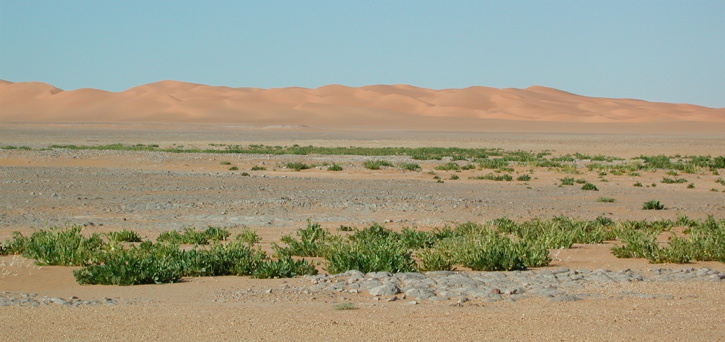Fazzan: Edeyen and Egede (Murzuq, Awbari, Wa-n-Kaza, Titersin)
Sand seas are made of high dunes, gravely gassi (inter-dunes), locally incised by small wadi courses, fossils dunes of last glacial maximum (18,000 BP, white sands), sediments of quaternary lakes (with fossils of fishes, crocodiles, rhinoceros, hippopotamus...) and exhibits a rich record of the past wetter periods. Nowadays most often life is scarse and discrete. Except for short periods after occasional rain showers, the only plants are dry or featured by seeds. During times of draught, only rare Tenebrionids and some nocturnal Scarabaoidea can be collected in these areas. When seeds germinate and the short-live bloom occur, insects come out and some phytophageous beetles may even be found.
In such situation and only one time, the Buprestidae, Paratassa ringenbachi was collected on flowering Eremobium longisiliquum together with the Meloidae, Hycleus sp. and abundant Hymenoptera and Orthoptera.
Beetles. Scarabaoidea: Brenskea varentzovi, Pentodon variolopuctatum deserti, Podalgus cuniculus reichei; Tenebrionidae: Anemia pilosa Tournier, 1868, Erodius sp.; Buprestidae: Paratassa ringenbachi Liberto and Gigli, 2005; Meloidae: Hycleus sp.
Main plants. Hyoscyanum muticans (Solanaceae), Launaea sp. (Composaceae), Salsola tetragona or tetrandra (Chenopodiaceae), Zilla spinosa (Brassicaceae, Carex sp. (Cyperaceae), Fagonia sp., Citrullus colocynthis (Cucurbitacea), Eremobium longisiliquum.......


